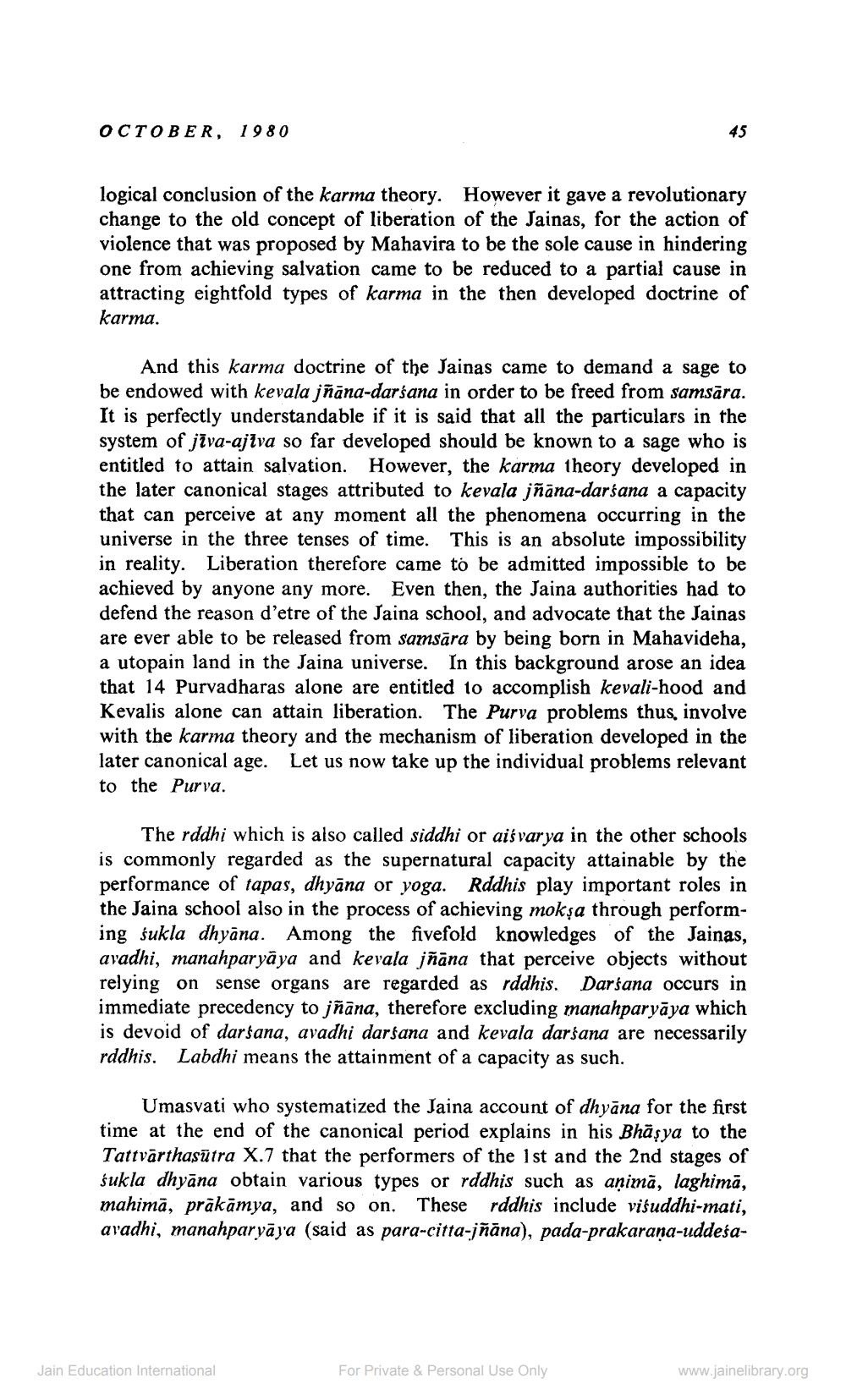Book Title: Jain Journal 1980 10 Author(s): Jain Bhawan Publication Publisher: Jain Bhawan Publication View full book textPage 7
________________ OCTOBER, 1980 logical conclusion of the karma theory. However it gave a revolutionary change to the old concept of liberation of the Jainas, for the action of violence that was proposed by Mahavira to be the sole cause in hindering one from achieving salvation came to be reduced to a partial cause in attracting eightfold types of karma in the then developed doctrine of karma. 45 And this karma doctrine of the Jainas came to demand a sage to be endowed with kevala jñāna-darśana in order to be freed from samsāra. It is perfectly understandable if it is said that all the particulars in the system of jiva-ajiva so far developed should be known to a sage who is entitled to attain salvation. However, the karma theory developed in the later canonical stages attributed to kevala jñāna-darśana a capacity that can perceive at any moment all the phenomena occurring in the universe in the three tenses of time. This is an absolute impossibility in reality. Liberation therefore came to be admitted impossible to be achieved by anyone any more. Even then, the Jaina authorities had to defend the reason d'etre of the Jaina school, and advocate that the Jainas are ever able to be released from samsara by being born in Mahavideha, a utopain land in the Jaina universe. In this background arose an idea that 14 Purvadharas alone are entitled to accomplish kevali-hood and Kevalis alone can attain liberation. The Purva problems thus, involve with the karma theory and the mechanism of liberation developed in the later canonical age. Let us now take up the individual problems relevant to the Purva. The rddhi which is also called siddhi or aiśvarya in the other schools is commonly regarded as the supernatural capacity attainable by the performance of tapas, dhyāna or yoga. Rddhis play important roles in the Jaina school also in the process of achieving mokşa through performing śukla dhyana. Among the fivefold knowledges of the Jainas, avadhi, manahparyaya and kevala jñāna that perceive objects without relying on sense organs are regarded as rddhis. Darsana occurs in immediate precedency to jñāna, therefore excluding manahparyāya which is devoid of darsana, avadhi darsana and kevala darsana are necessarily rddhis. Labdhi means the attainment of a capacity as such. Umasvati who systematized the Jaina account of dhyāna for the first time at the end of the canonical period explains in his Bhasya to the Tattvärthasutra X.7 that the performers of the 1st and the 2nd stages of sukla dhyana obtain various types or rddhis such as animă, laghimā, mahimā, prākāmya, and so on. These rddhis include viśuddhi-mati, avadhi, manahparyāya (said as para-citta-jñāna), pada-prakaraṇa-uddeśa Jain Education International For Private & Personal Use Only www.jainelibrary.orgPage Navigation
1 ... 5 6 7 8 9 10 11 12 13 14 15 16 17 18 19 20 21 22 23 24 25 26 27 28 29 30 31 32 33 34 35 36 37 38 39 40 41 42
